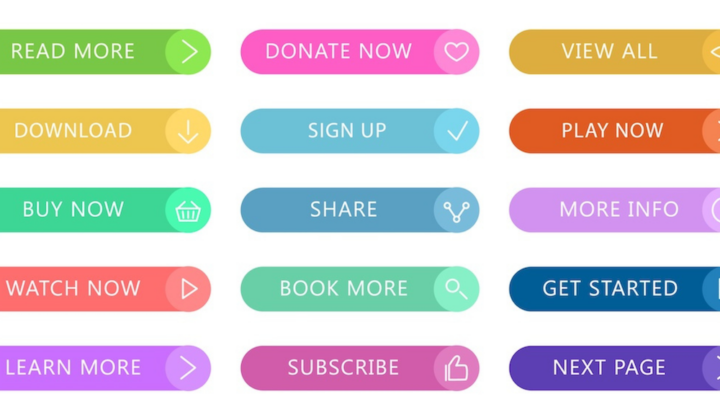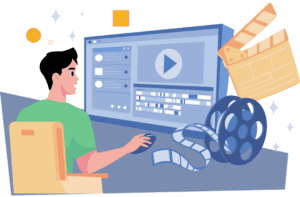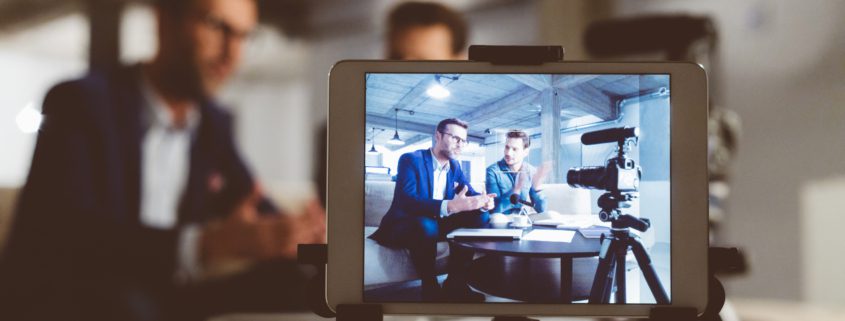
Powerful Call-to-Action Phrases to Increase Clicks
Are you looking to increase your conversion rate? Call to action phrases are an essential part of the conversion process, but what kinds of CTAs should you put on your website? CTAs should be simple yet effective and catch the attention of your visitors.
The formula for a successful CTA page title consists of combining such sales buzzwords as “free,” “discount,” “offer,” “gift,” and “guarantee,” with action-oriented words like “click,” “download,” “request,” and “send.” Putting together a strand of words to entice clicks sometimes doesn’t get the job done, though. Therefore, as a marketer, think of what strikes you as a buyer: emotion.
Humans are oddly emotional creatures and are the only ones who tie those emotions to money. Hence making many of their purchases subject to the emotions invoked by marketing which is exactly why call to action phrases are so important. This isn’t a secret to marketers either, but leveraging that knowledge and coupling it with your brand’s content can be a little tricky.
The Best Call to Action Phrase Building Tips
CTAs can be as simple as “click here” and “download now,” but can have an infinitely more powerful meaning by adding a few simple words and giving the reader the benefit of what they are getting from the offer.
- Include a possessive determiner such as “your.” The possessive aspect of the CTA makes the reader feel as though that piece of content or your offer is already theirs to be had and in their back pocket.
- Briefly outline the benefit of the content. Add what your website visitor gets from clicking your CTA. This almost acts as a miniature landing page. For example, instead of saying “click here” use a phrase like “click here for your free white paper.”
- Use action words and urgency to encourage clicks. “Limited downloads,” “limited time,” and words such as “now” and “quickly” will enhance the sense of urgency for your users to click on your brand’s CTAs.
Actionable CTA Phrases
Actionable CTAs leverage words like “now,” “here,” “click,” etc. Meanwhile, using an action word to draw the reader into the CTA gives them that emotional sense of action and satisfies that human demand for immediate satisfaction. Getting content “now” versus “get it in a week” will drive more clicks onto your good CTA Phrases.

Keeping in mind some of the tips above, let’s take a look at how using actionable words can make a simple CTA far more powerful. We’ve bolded some of those key terms, but have a little fun. Remove some of the bolded items and see what that does to the phrase. Keep in mind that you can insert any content type or offer in the brackets to fit your brand. Here are a few examples of actionable CTAs:
- Download Your [Content] Now
- Click Here for Your Free [Content]
- Join Now and [Get 30 Days Free]
- Download Your Free [Content] Here
- Start Getting Your Free [Content] by Clicking Here Now
- Click Here for Details About the Best [Service/Product] for Your Company
Also Read: 5 Types of Landing Pages To Increase Your Lead Conversion Rate
Urgent CTA Phrases
For most of us, the essence of time can very well be the thing that either helps us make a decision or turns our “eventually” into never. Your buyers are the same way, and giving them a little nudge into a sense of urgency. This can be just what they need to click your CTA, capitalize on your content, and ultimately buy what you’ve got up for offer. Adding some personal touches (in the right context) can further drive that sense of urgency for your buyer.
Limited-time offers, limited-time discounts, first-time buyer discounts, and limited supply all tend to push buyers a little closer to the buy button in their shopping cart. This can be a great way to improve your CTAs. In the case of content and CTAs where the downloads themselves are free, your prospective buyer has virtually nothing to lose. Here are a few urgent CTA phrases that are sure to light the proverbial fire under your buyer and increase clicks:
- Download Your [Content] While Supplies Last
- Act Quickly Limited Downloads Available
- Hurry, This Free [Content] Offer Expires Soon
- Secure Your Spot Today! Limited Spots Available
- Only X Days Remaining to [Sign Up, Download, Attend]
- Take Advantage of this Limited [Content] Today Only
- I Urge You to Download this Limited Time Offer
Want to attract more leads? Also Read about Attraction Marketing!
Exclusive CTA Phrases
Adding urgency to a call to action phrase can sometimes seem a little pushy, especially to some C-level managers and business owners. Meanwhile, another equally crafty way to make your CTAs appealing to your target audience is: exclusivity. Exclusive offers give readers the feeling that they are a part of or at least offered a deal that no one else is in on.
We see these sorts of lead-generation tactics across multiple retail platforms. These deals are both confined to time and exclusive to members only. Whether or not your particular brand is a retailer or not we, as consumers, have been trained to jump on those exclusive offers available only to the elite. This can work with your best Call to Action Phrases as well. Here are some useful exclusive CTA phrases:
- Join Our Mailing List and Get Exclusive Content
- This Offer is Only For Our Subscribers
- Sign Up for Exclusive Offers only Available to Subscribers
- Request an Invitation to [Join, Sign Up, Get Content]
- This [Content, Offer] is Only Available to [Subscribers, Members]
- Download Now for Exclusive Access
Responsive CTA Phrases
Naturally, every call to action keyword should aim to generate a response from your target buyer. While practically any of the CTA phrases we’ve outlined could be categorized as either “actionable” or “responsive,” we think it’s best to separate the two. Actionable CTAs lead users towards a specific action, such as clicking, downloading, subscribing, etc. At the same time, responsive CTAs invoke a sense of two-way conversation.
With that said, the CTA phrases below will elicit a response from your potential lead: think feedback, a reply, or a point of contact. These types of CTA phrases should hopefully open up a dialogue between you and your potential buyer and allow them to start the conversation. Here are a few examples of responsive CTAs:
- Talk to One of Our Experts About…
- Get a Free Consultation and Talk About Your Business Goals
- We’d Like to Hear from You: Talk to a Specialist Today
- Let Us Know What You Think
- Contact Us Today
- Contact Me
- Don’t Hesitate to Get in Touch With Us
Craft Your Own CTA Phrases
As we’ve mentioned, the sky really is the limit to crafting attractive content-focused best Call To Action phrases. Experimenting with them is one of the great ways inbound marketing can help marketers learn more about their tactics. What’s important to keep in mind is that your buyer is the focus of any CTA or piece of content you craft. Without a doubt, targeting those CTAs is crucial for the success of your content initiatives.























 While celebrity influencers dominate B2C marketing, micro-influencers are emerging as leaders in the B2B space. These influencers often specialize in
While celebrity influencers dominate B2C marketing, micro-influencers are emerging as leaders in the B2B space. These influencers often specialize in  In the B2B world, quick, one-off influencer collaborations often fall flat. Long-term partnerships, on the other hand, are far more effective at building trust and driving meaningful results. Collaborating consistently with one or a select group of influencers creates a steady stream of content that helps establish a solid foundation. These ongoing partnerships allow influencers to gain a deeper understanding of the brand’s products, values and audience, resulting in content that is more authentic and relevant.
In the B2B world, quick, one-off influencer collaborations often fall flat. Long-term partnerships, on the other hand, are far more effective at building trust and driving meaningful results. Collaborating consistently with one or a select group of influencers creates a steady stream of content that helps establish a solid foundation. These ongoing partnerships allow influencers to gain a deeper understanding of the brand’s products, values and audience, resulting in content that is more authentic and relevant.






 Patagonia Website
Patagonia Website

